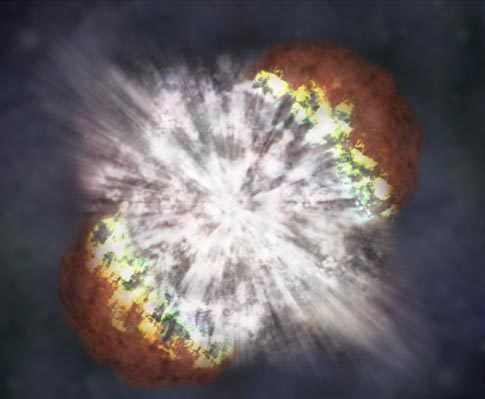Light from stellar explosion older than both Earth and Sun detected
 Washington, April 3: Light from a stellar explosion older than both the Sun and Earth and more than half way across the universe, has been detected by an amateur internet telescope.
Washington, April 3: Light from a stellar explosion older than both the Sun and Earth and more than half way across the universe, has been detected by an amateur internet telescope.
The explosion, known as a gamma-ray burst, was photographed by the “Seeing in the Dark Internet Telescope” (SIDINT) in New Mexico on March 30. The SIDINT digital photos show the burst flaring up briefly, then fading from view within four hours.
Astronomers studying the gamma-ray burst determined that its light traveled 8.4 billion lights years—more than half way across the radius of the observable universe—before reaching Earth.
The light therefore was older than the Sun and Earth, which formed some 4.5 billion years ago.
Gamma-ray bursts are the most energetic events in the known universe. Astronomers remain uncertain about just how they are created, but one mechanism may be the collapse of a giant star to form a black hole, resulting in a titanic explosion that can spit out intense jets of gamma rays, X-rays, and visible light.
When NASA’s orbiting SWIFT satellite detected the March 30 gamma-ray burst, it automatically emailed the celestial coordinates to professional and amateur astronomers around the world.
In Tucson, Arizona, SIDINT telescope manager Adam Block responded quickly to the news, activating the telescope over the internet and obtaining a sequence of images within minutes of the SWIFT alert.
The resulting “light curve” data can be employed by astrophysicists to help understand how the bursts are produced.
According to science writer Timothy Ferris, “This detection of ancient light demonstrates that amateur astronomers with backyard telescopes can make real contributions to science, observing celestial events that were beyond the reach of even the largest professional telescopes within living memory.” (ANI)